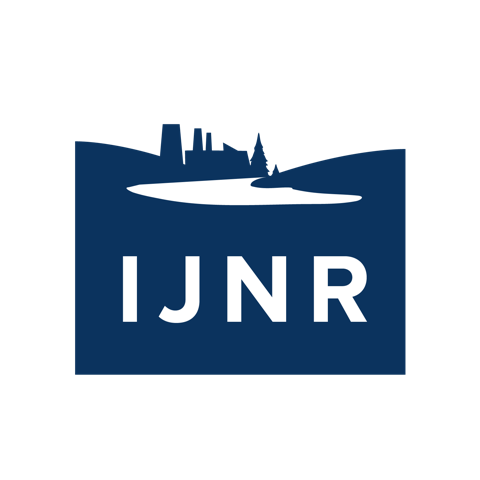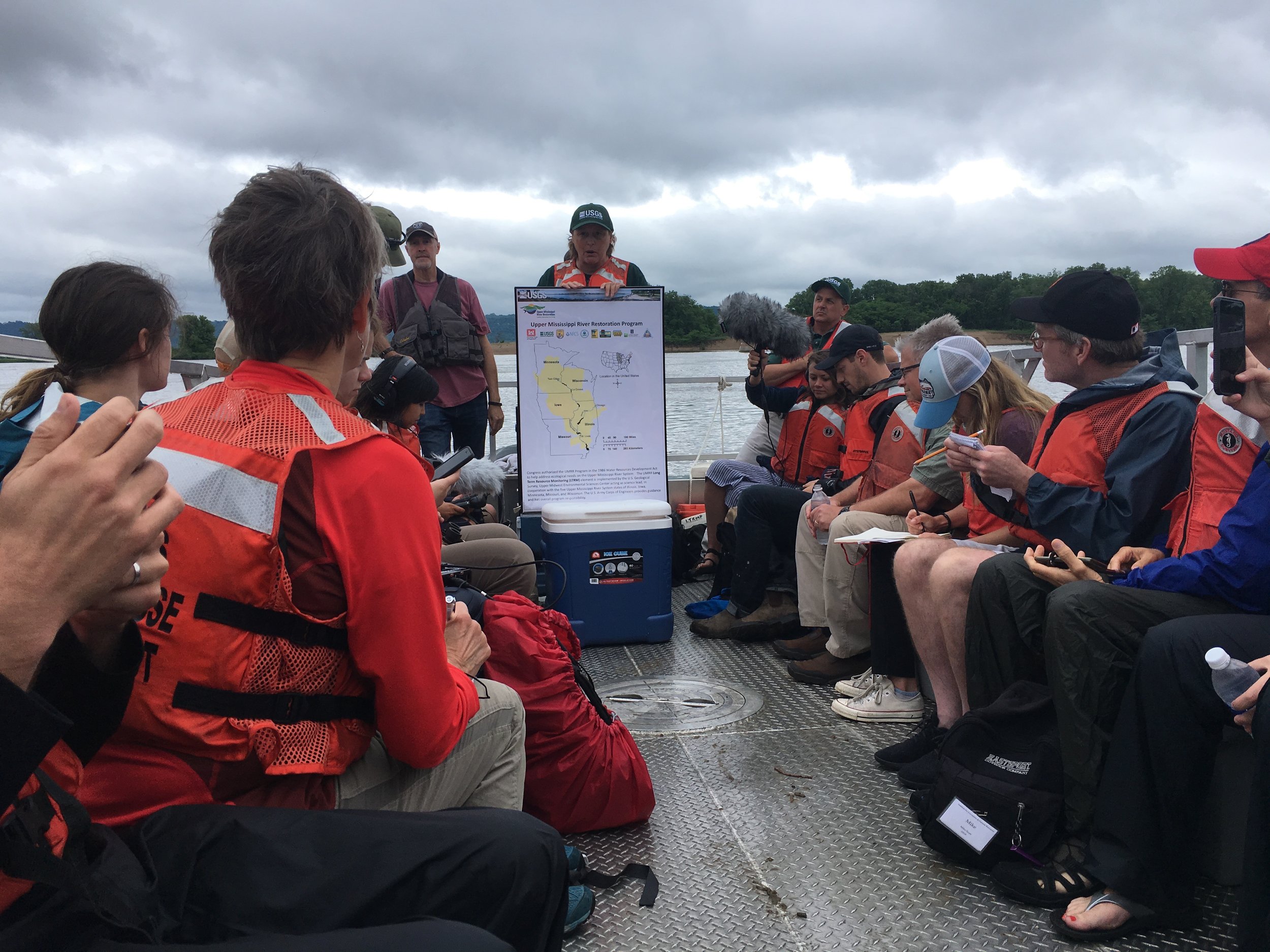Day 5: Multiple-Use Management, River Restoration, and Coexisting with the Mississippi
Managing a Resource for Multiple Stakeholders and “Priority Public Uses”
We boarded a pontoon with representatives from the U.S. Fish and Wildlife Service, U.S. Geological Survey, U.S. Army Corps of Engineers, Wisconsin Department of Natural Resources and The Nature Conservancy to tour Pool 8, the body of water created by the upstream Lock and Dam 7 and downstream Lock and Dam 8. Part of the Mississippi River National Wildlife and Fish Refuge, the pool was created as a byproduct of maintaining consistent water levels for navigation but it is now managed to provide for public uses like hunting, fishing, boating and wildlife observation. We talked with resource managers about how they accomplish this feat as we worked our way down the river.
Success Stories in River Restoration and Lessons Learned from Long Term Monitoring
Authorized by the Water Resources Development Act of 1986, the Upper Mississippi River Restoration (UMRR) Program was the first environmental restoration and monitoring program undertaken on a large river system in the United States. Funded by a single line item from Congress, the UMRR, in addition to restoration projects, houses the Long Term Resource Monitoring program, which has conducted research and explored long-term trends on the river for the last few decades. We headed into the field to see current restoration projects and monitoring efforts.
Build That Wall…Or Don’t: Davenport’s Novel Approach to Life on the River
Unlike most of its Mississippi River brethren, the City of Davenport, Iowa, turned down millions of dollars to build a flood wall, opting instead to live with the natural cycles of the river that provides commerce, tourism – and one heck of a downtown view. The river encroaches on Davenport periodically, but the city has removed homes, shored up buildings and dedicated most of its riverfront to park space, making the Old Man a welcome if unpredictable visitor. We stopped off at the city’s Nahant Marsh, itself a wildly biologically diverse byproduct of river flooding, to talk about the genesis of the city’s choice. Then we headed over to Modern Woodmen Park, home of the minor-league Quad Cities River Bandits baseball team to hear from city and civic leaders about how Davenport operates with occasional wet ankles.




